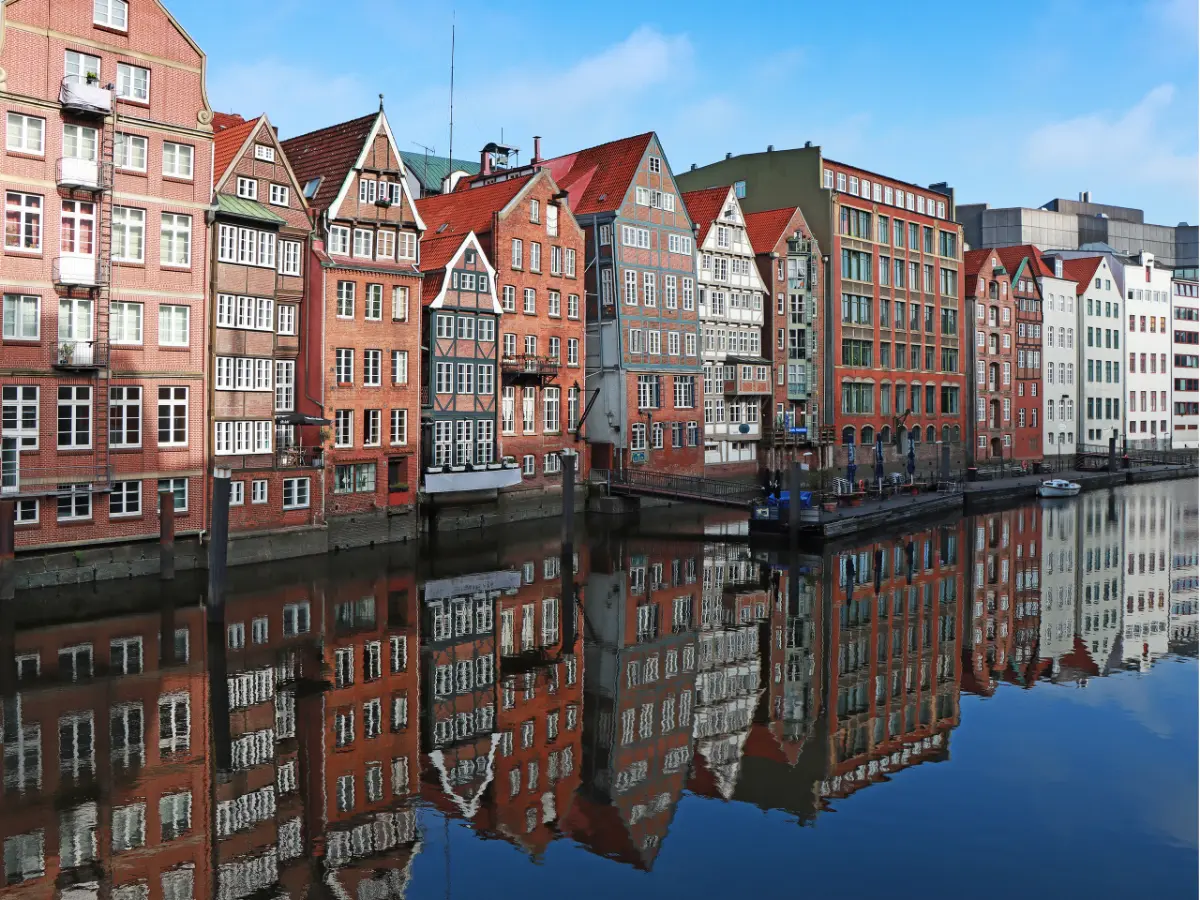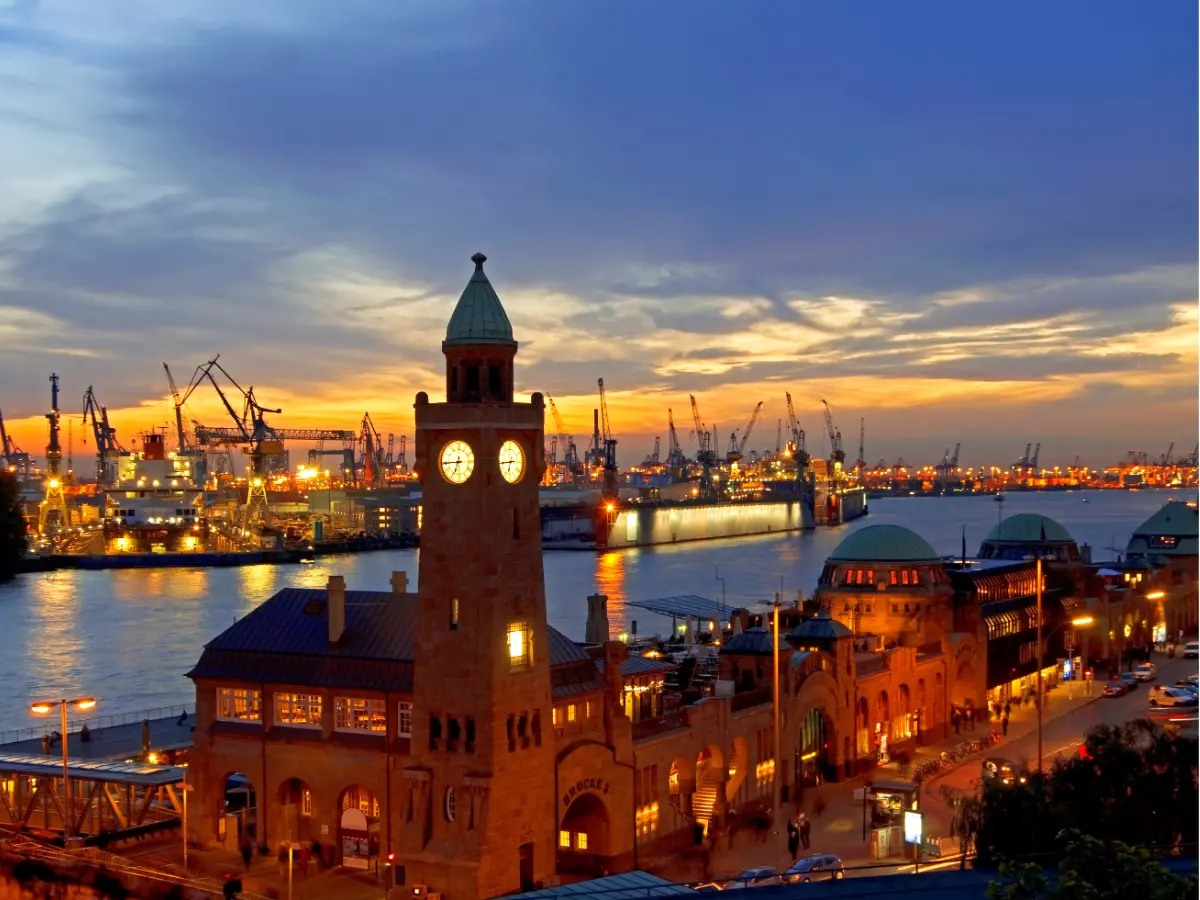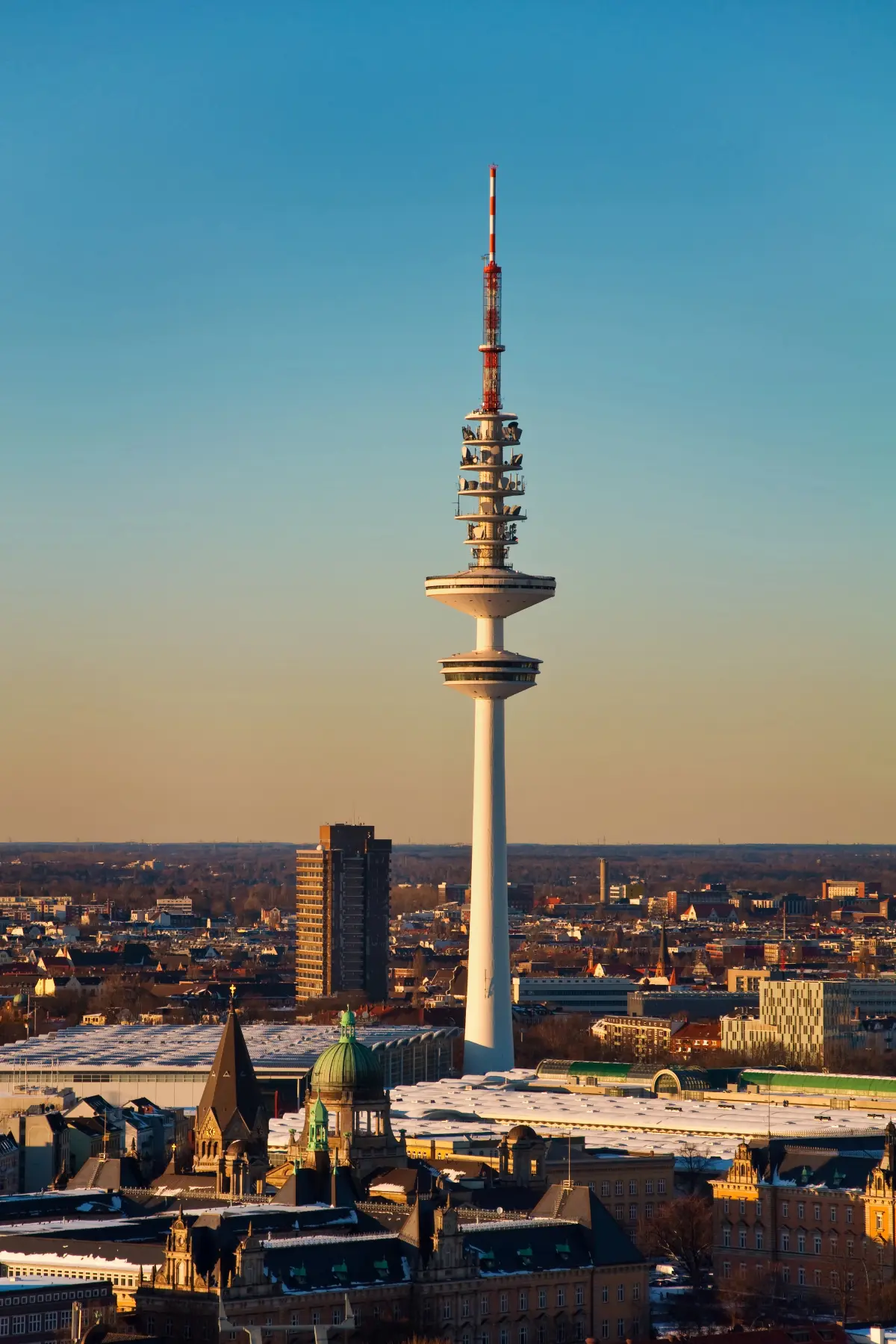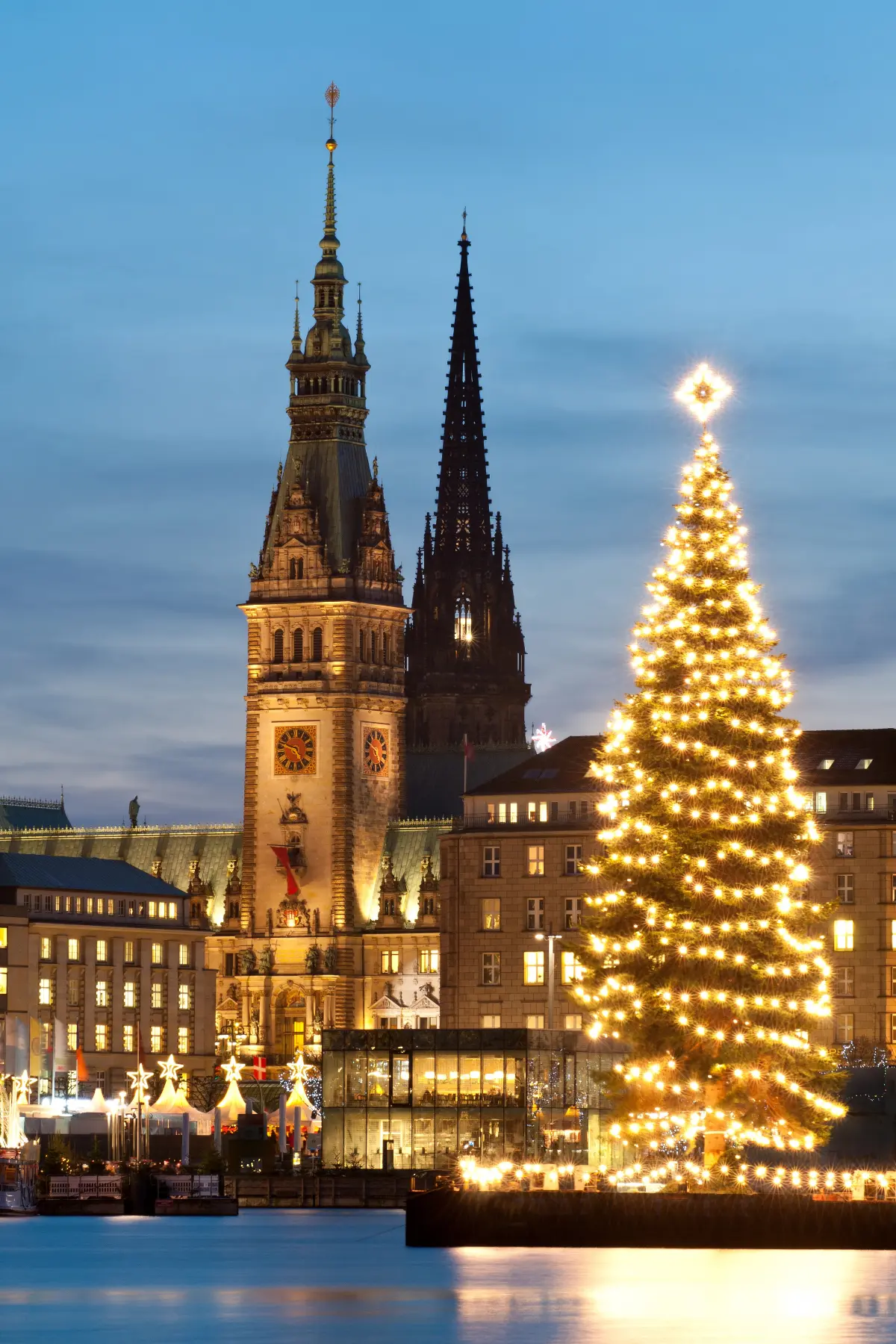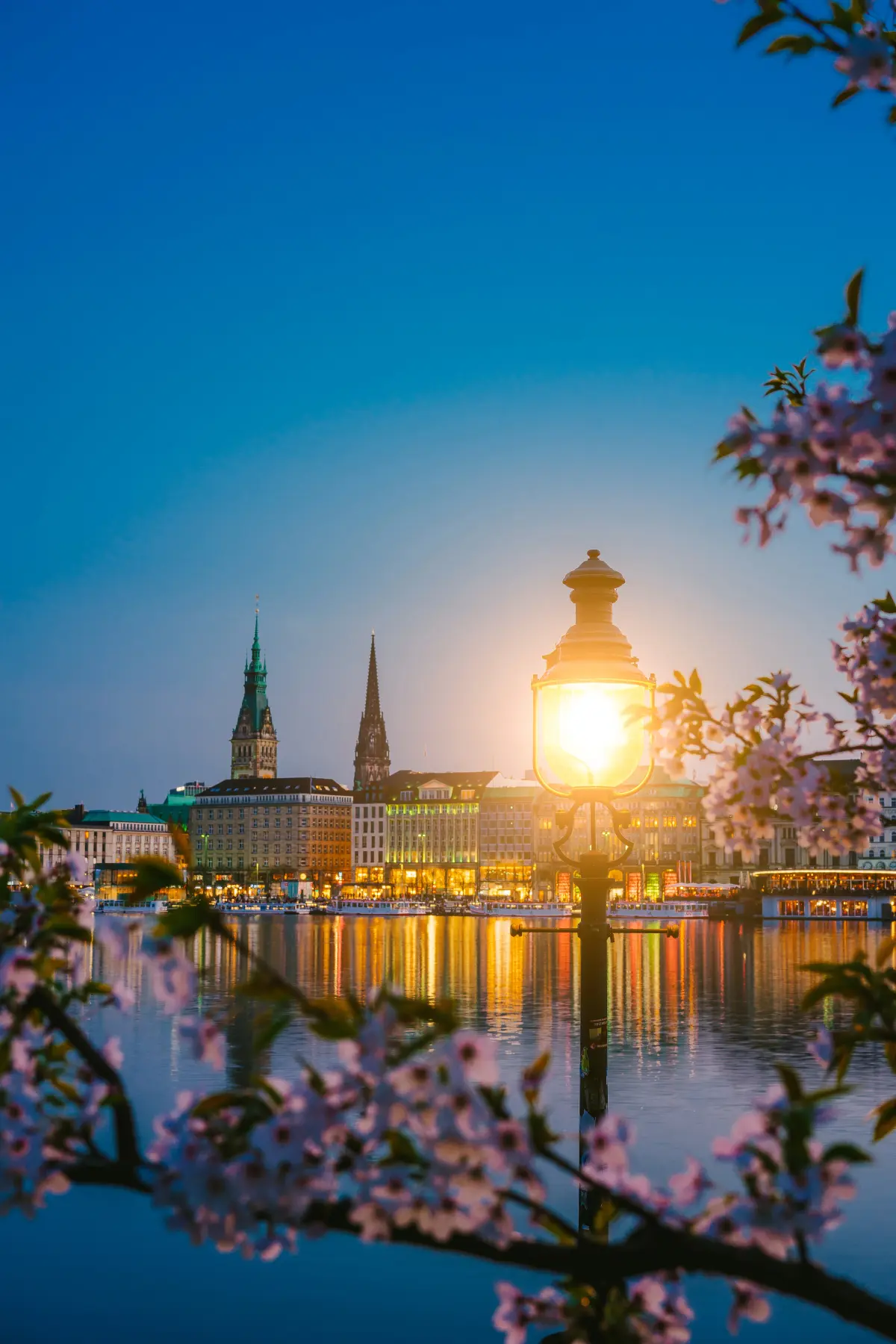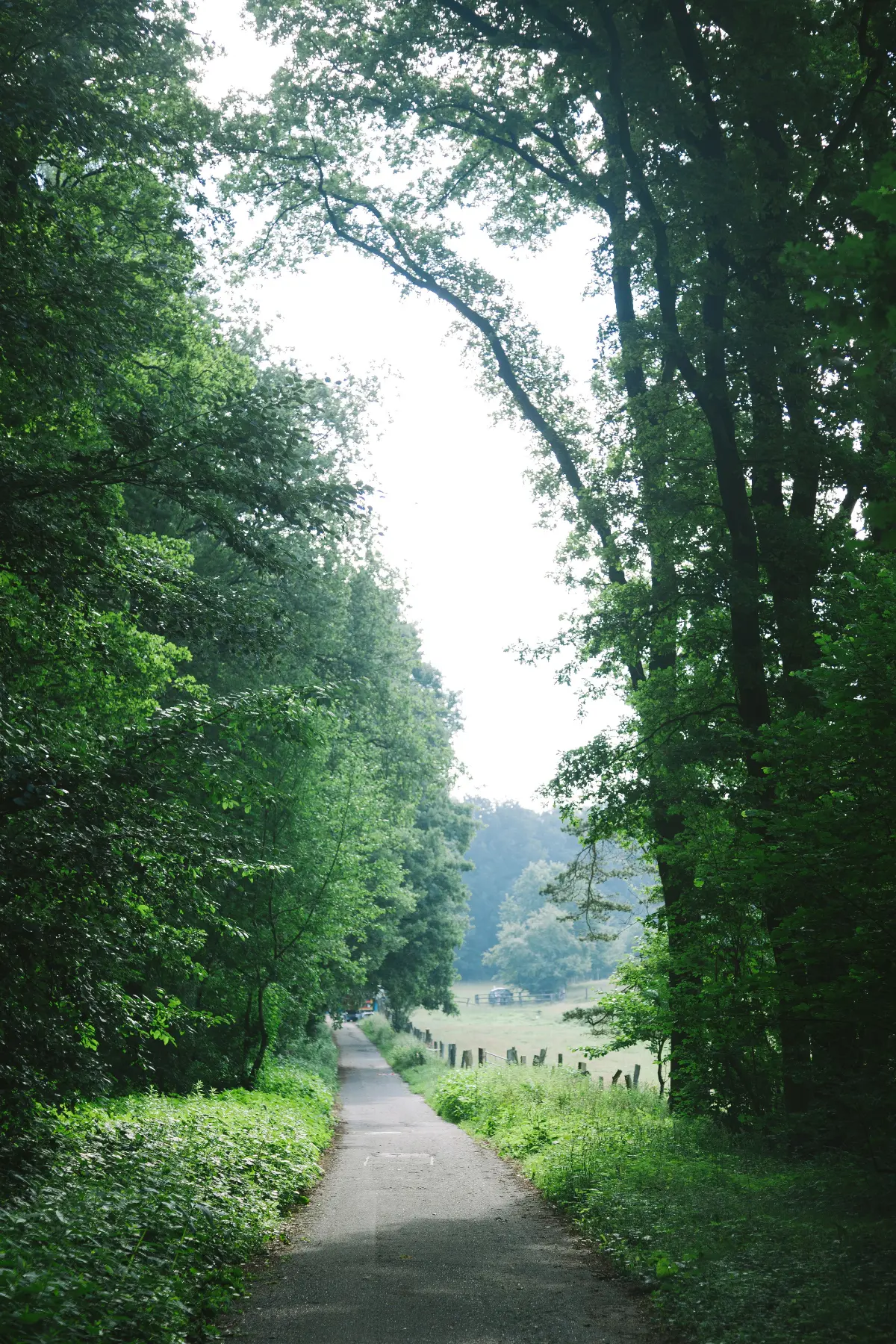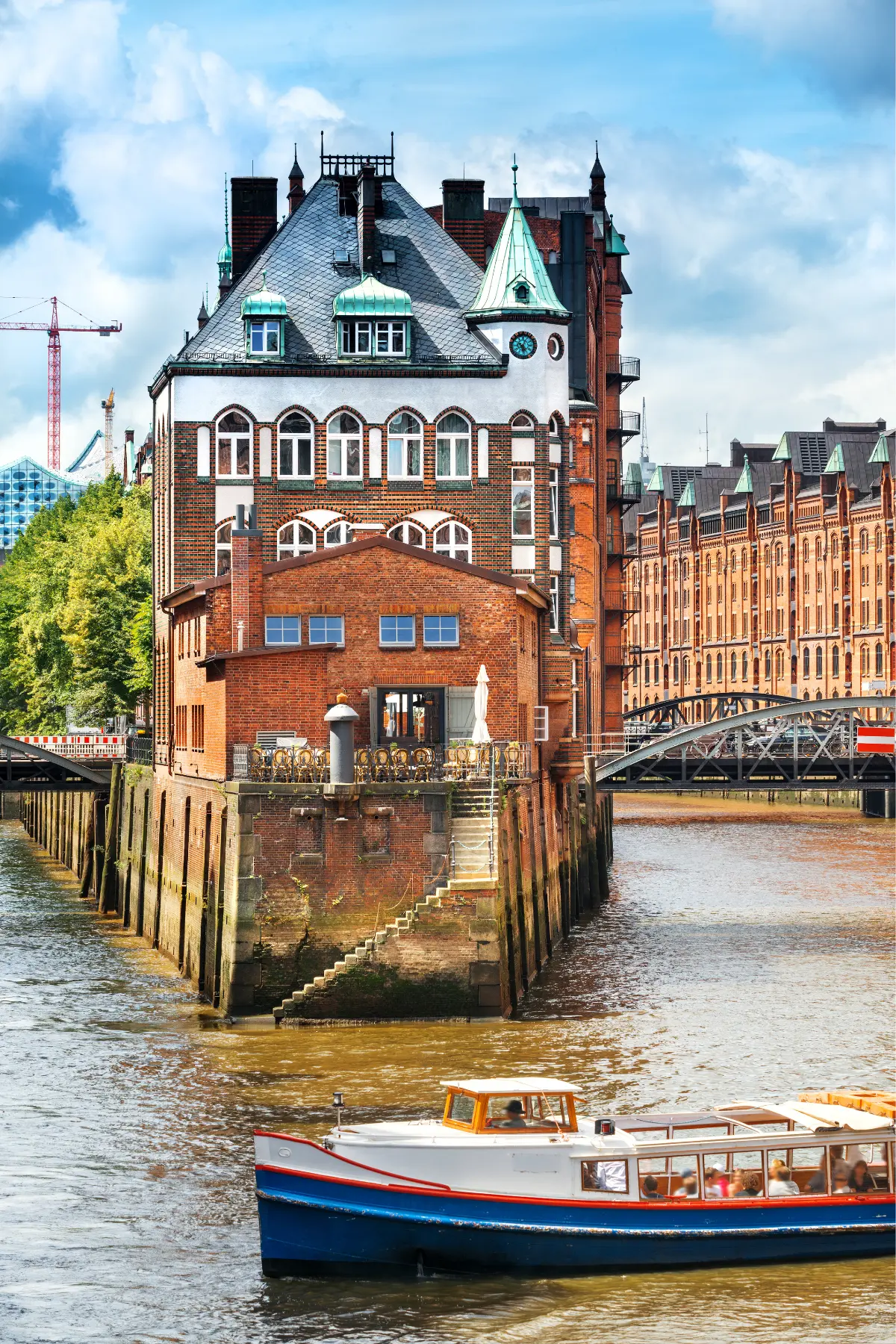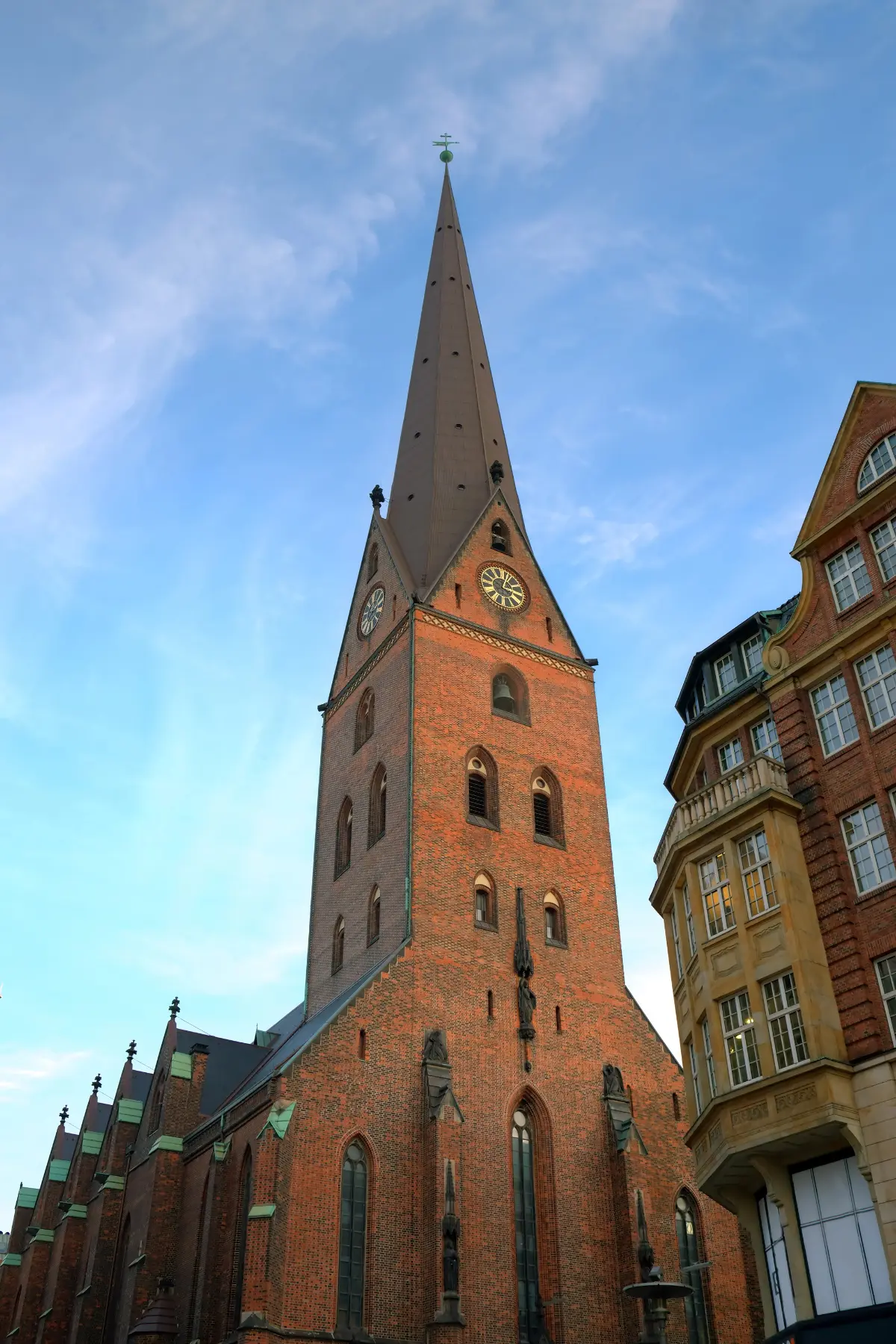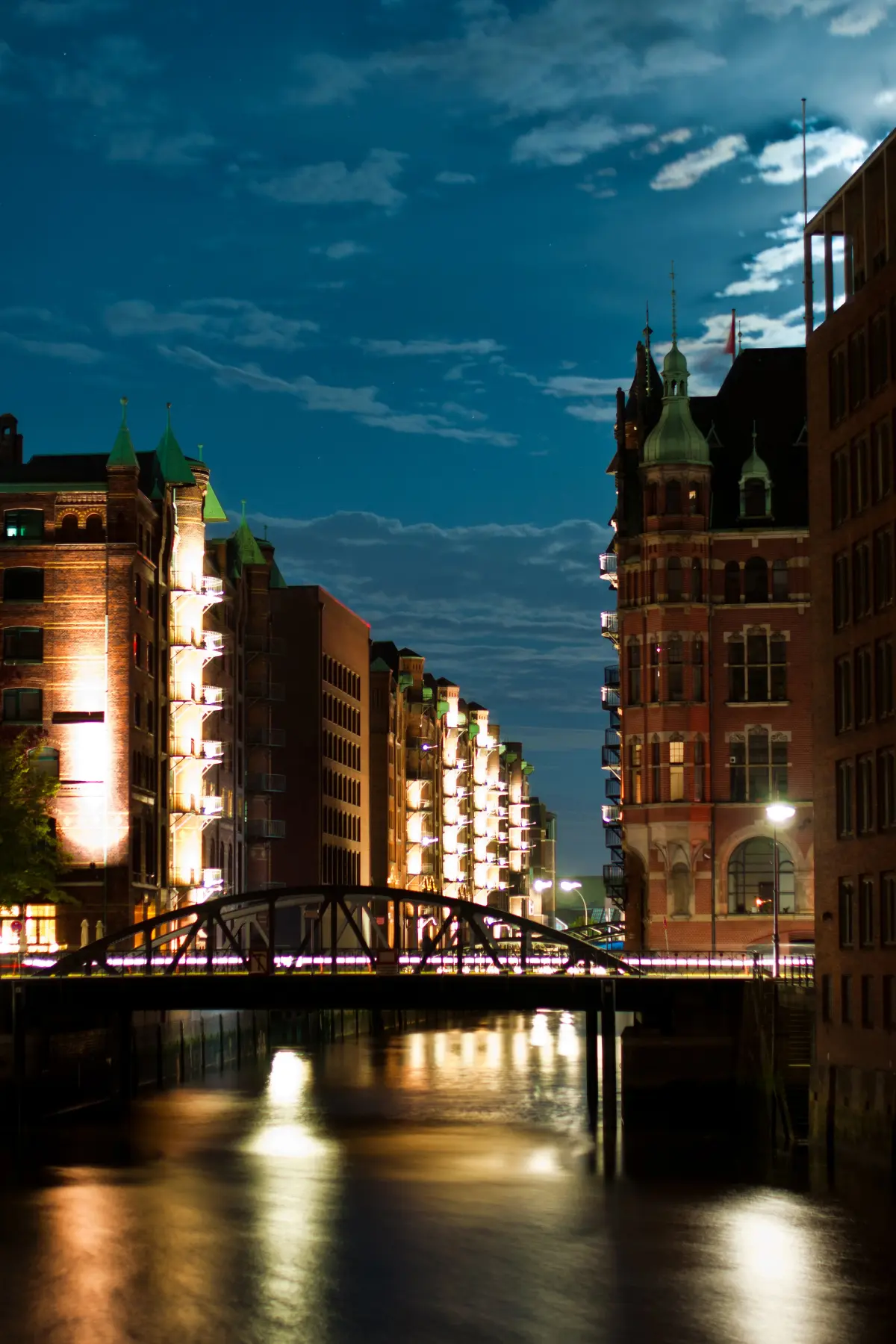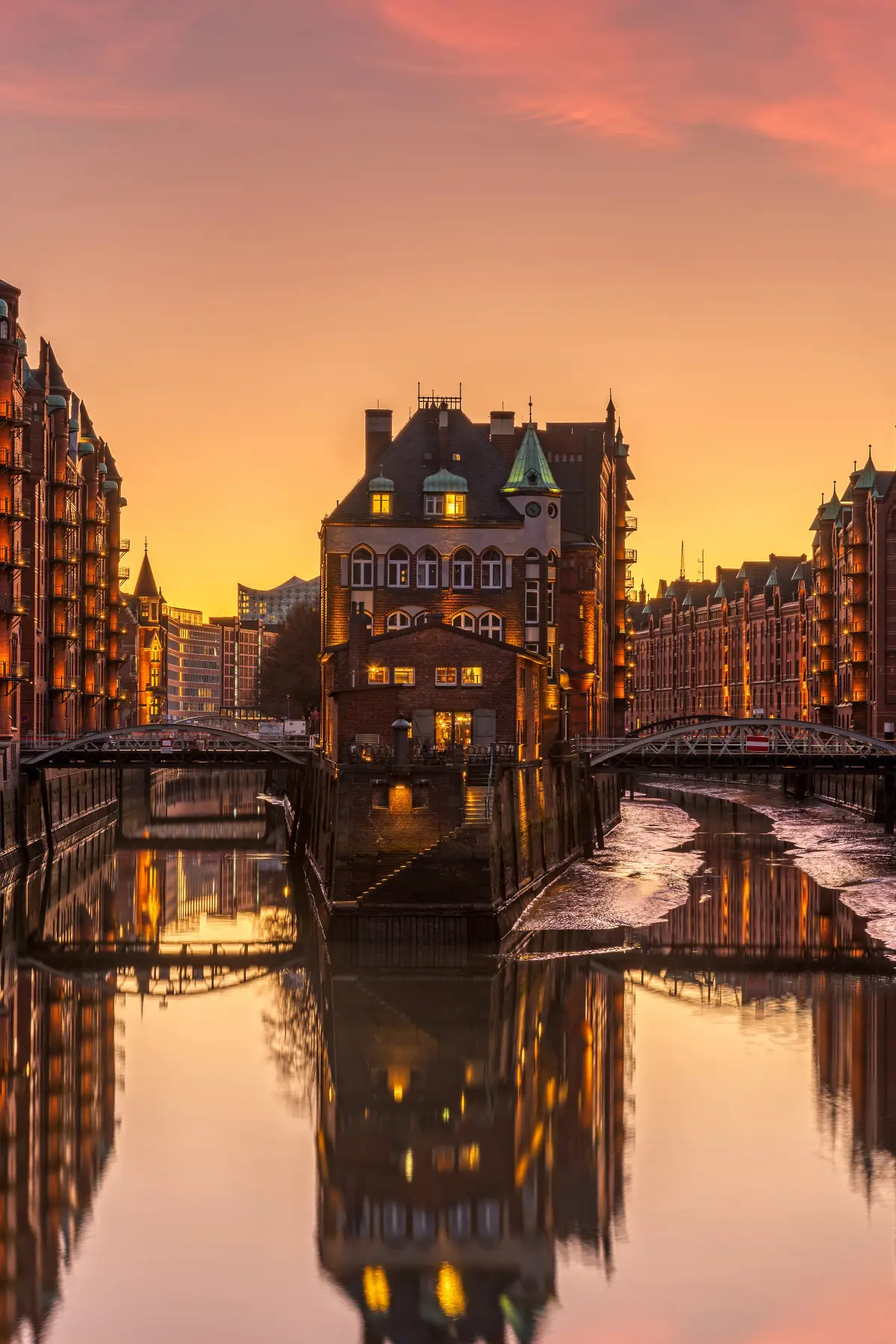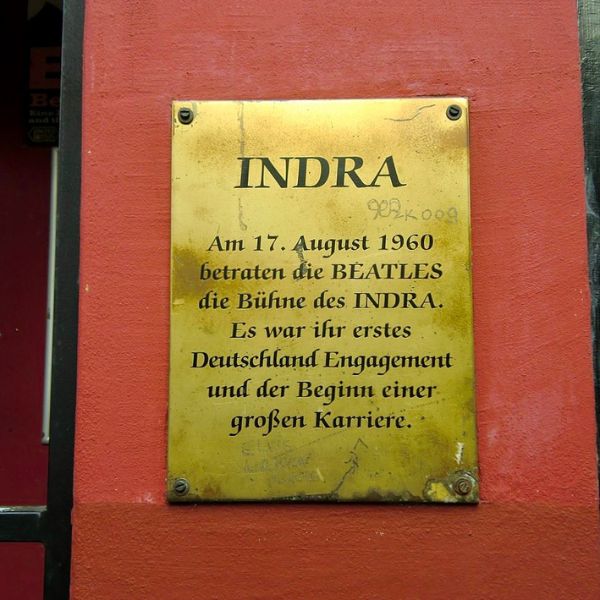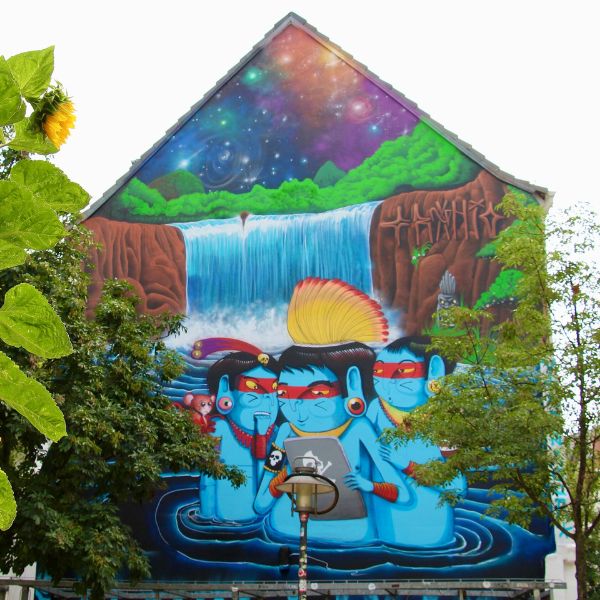Warm up this winter with Oma's newest cookbooks - available on Amazon >>
- Home
- Top German Cities To Visit
- Hamburg Germany Things to do
Hamburg, Germany: Things to do and the best places to see.
By: Eran Fulson / Traveler, writer, and curious observer of all things German.
Right in the heart of Northern Germany lies the port city of Hamburg. This formerly medieval settlement has grown exponentially into a culturally diverse epicenter of Germanic heritage. While its prosperity largely comes via the sea, things to do in Hamburg range from historical centers, artistic culture, gastronomy, and an eclectic entertainment scene.
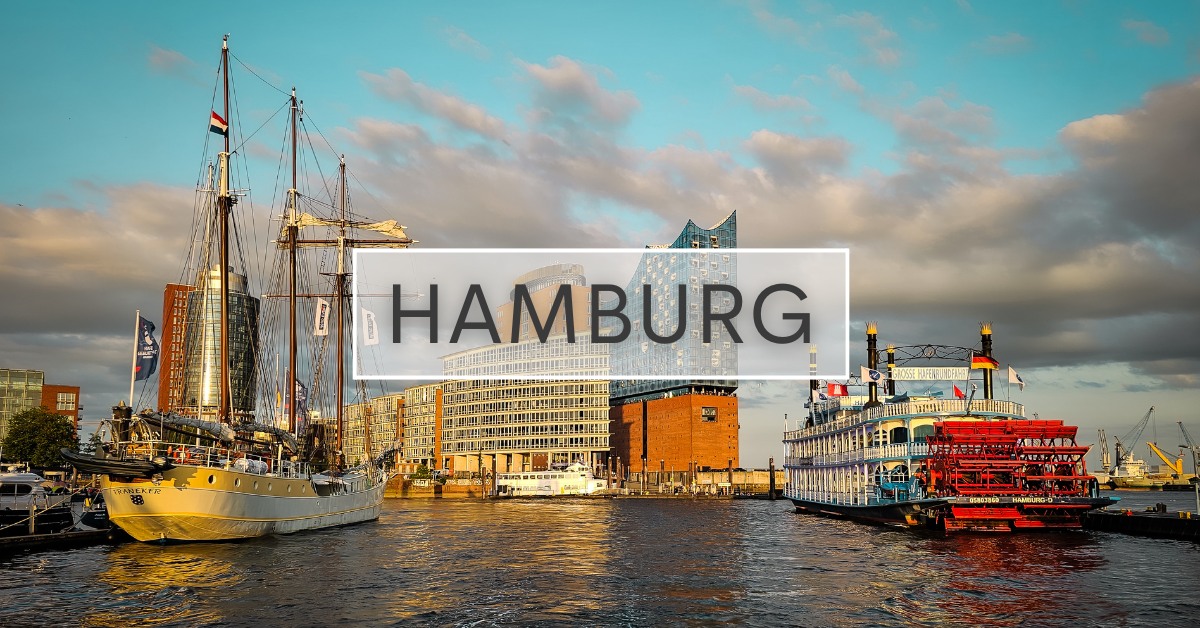
On this page:
Curated Gallery:
Its accessibility to oceanic trade routes comes from being the third-largest port in Europe. From an outsider's perspective, one wouldn’t think of Hamburg as a city of canals and bridges that puts Venice away in the shadows.
However, there are more bridges here than in Venice, Amsterdam, and London combined. With an estimated 2,500 bridges/crossings, Hamburg is recognized by Guinness World Records as the city with the most bridges in the world.
Beginning as a moated castle along the banks of the Elbe River in AD 825 known as Hammaburg, the years following were anything but kind. Between Viking raids, the Black Death, and the Second World War, Hamburg was in a state of seemingly continuous rebuild.
Hamburg established itself as a vital port city during the roughly twelve centuries of habitation, challenging the national economic contributions of cities like Frankfurt and Berlin.
Getting Here and There
Among the key benefits of being the second-largest city in Germany: accessibility. Hamburg Airport (HAM) is the fifth largest, and the oldest, in the country.
TOP TIP
Be sure to look up the Hamburg Card for easy public transport access and discounts on various cultural, dining, and shopping offerings around the city.
Hamburg Airport serves approximately 15 million passengers traveling on both domestic and international flights. Located only 4.9 miles (8 km) from the city center, a variety of travel options make getting into the city a relatively painless experience. Between the S-Bahn (overground train), buses, and taxis, a trip to the center will take approximately 30 minutes.
When riding the rails into the Hamburg Hauptbahnhof (Central Station), it truly doesn’t matter from which direction you arrive by or want to head towards. At capacity, the central train station can accommodate 450,000 passengers via 1,700 trains daily in seemingly all directions.
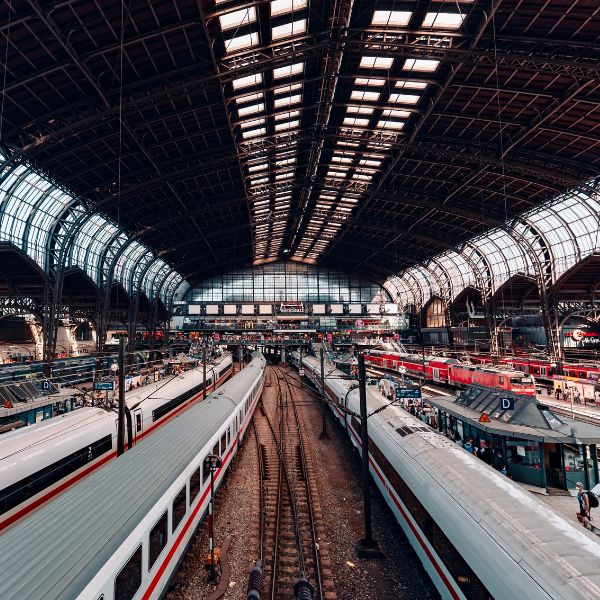
Though slightly less glamorous, however still efficient, buses are also available.
And of course, it wouldn’t be a true European city without easy access to bicycles and a cycling network crisscrossing the metropolis. Twelve main routes connect central Hamburg to the surrounding boroughs, with 123 rental stations dotted around the city - generally located next to U or S Bahn train lines and other major attractions.
We've partnered with Stay22 to help streamline your holiday booking experience. Using the interactive map below, find your next home away from home. Also added are points of interest for things to do in Hamburg that we cover in this post.
Port of Call
You won’t travel far in any direction of central Hamburg without coming across the water. The port of Hamburg is situated at the entrance of the Elbe River coming in from the North Sea, where it then breaks up into numerous arteries before venturing off to the south of the city.
Such was the importance of the port area of Hamburg, the world’s largest warehouse complex was founded in 1885. Called the Speicherstadt (warehouse district), the current iteration is now a UNESCO World Cultural Heritage Site which has become a lively city quarter. Chances are if you’ve seen a photo of Hamburg at night, or in the clutches of winter, it will have been from here.
Only slightly busier today than it was back then, more than 15,000 container ships from over 100 countries around the world pass through the port. Hamburg’s Übersee-Zentrum (overseas center) is the largest roofed warehouse in the world, while the Waltershof Container Terminal is the largest of its kind in Europe.
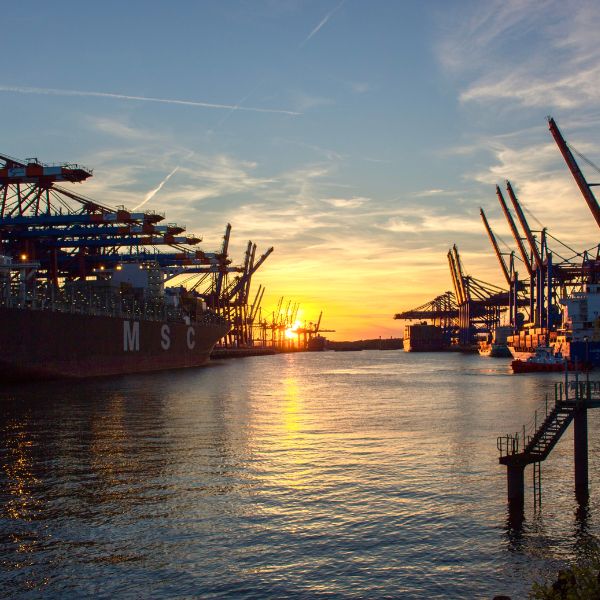
Whatever Floats Your Boat
Fittingly situated in the heart of the Speicherstadt is the International Maritime Museum. The museums span 10 floors and cover 3,000 years of maritime history from prehistoric man to current luxury cruise ships. As much as there is a noticeable emphasis on German seafaring, international collections combine to give a wholesale deployment of maritime knowledge.
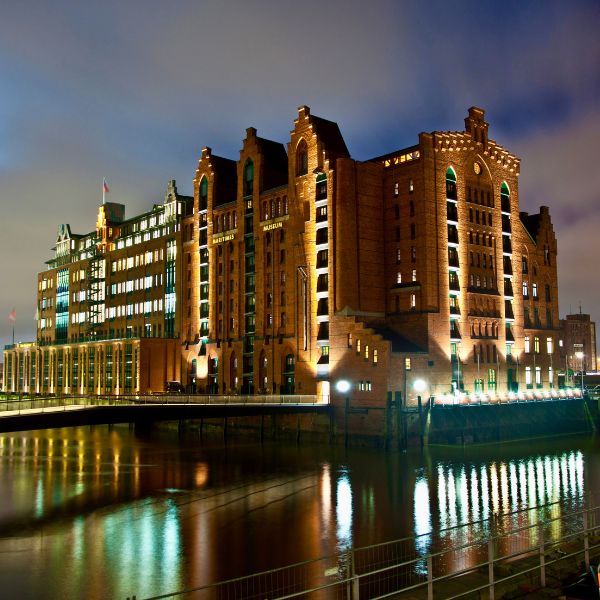
Big Things vs Small Packages
Staying the in the warehouse district, but moving in a very different direction, is the Miniatur Wunderland. A very basic understanding of German, if any at all, is needed to translate that one. This miniature wonderland is the brainchild of three former nightclub owners who decided to take a gamble and create the world’s largest model railway.
It began at an already large 16,145 square feet (1,500sqm) with 54,104 feet (16,491 meters) of track laid out. Further extensions are planned to add to the fleet of 1,166 model trains across 11 theme worlds.
It really is an amazing place to visit, even if model trains aren’t your thing. But if they are, there’s no better way to unleash your inner-child and revisit a bit of nostalgia on a very grand scale (albeit miniature).
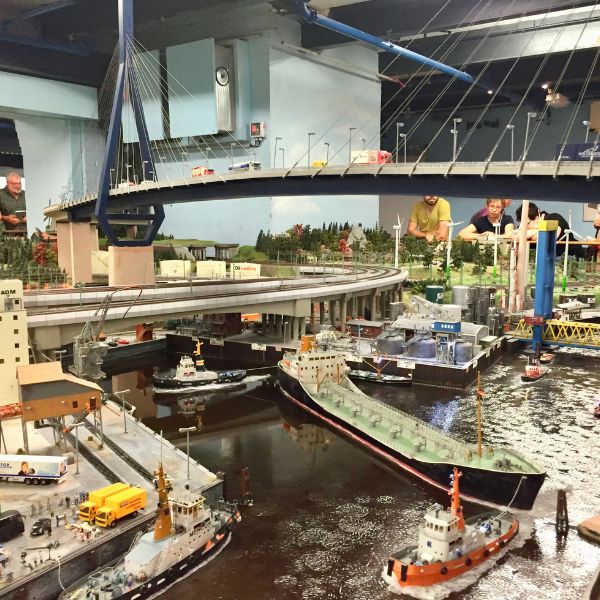
In Plain View
St. Michael’s Church has been a mainstay of Hamburg for more than 400 years - albeit, not in its current form. Falling to a lightning strike in 1705, then a fire in 1906, followed by heavy damage during WWII, the third iteration has once again become an unmissable landmark of the city’s skyline.
St Michael’s iconic copper dome resting on its bell tower has been one of the top Hamburg attractions since restorations were completed. The tower rises up over 430 feet (132 m) with an observation deck at 347 feet (106 m) which offers a beautiful panorama view over the city and harbor.
Renowned for its Baroque style, St. Michael’s is also the largest church in Hamburg, with seating for 2,500 in its ominous nave.
The centerpiece of the church is undoubtedly the 65-foot (20 m) high altar. The opulent marble altar illustrates the resurrection of Christ, which is composed of small colored-glass tiles. Respectfully doubling the number of people inside the church is the crypt below, where 2,000 are laid to rest.
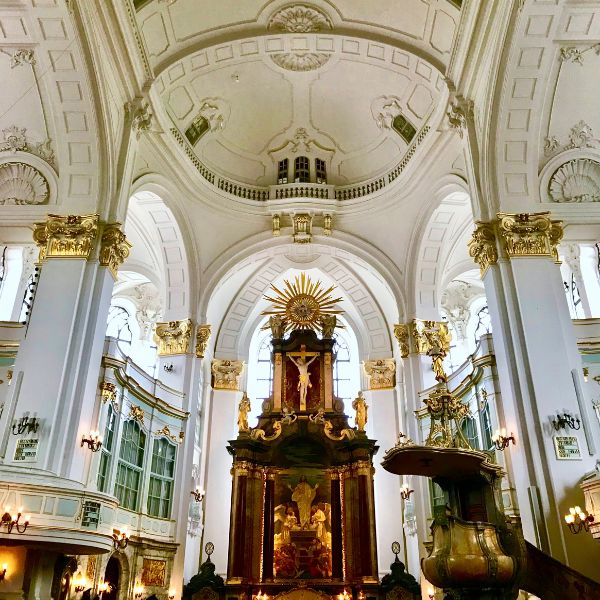
In with the Old, On with the New
In a city that has largely kept from building skyward, anything that crops up over 10 floors is going to be noticeable. None perhaps more than the Elbphilharmonie (Elbe Philharmonic Hall). Hamburg’s recently added concert hall is as much architectural prowess as it is a musical emanation.
Literally rising up through the former warehouse Kaispeicher A, its towering glass walls are topped with a curved roof mimicking the waves of the Elbe River below.
Inside is a marvel of architectural technology, with the 12,500-tonne Grand Hall decoupled from the rest of the building by means of sitting on 362 giant springs. The Hall’s acoustics have been finely tuned with a specially-developed material called 'The White Skin'.
Consisting of 10,000 gypsum fiber panels that have been milled to exacting 3D calculations with less than 0.04 inches tolerance. The walls and ceiling seamlessly merge as one single entity, covering nearly 70,000 square feet (6,500 sqm).
Given the chance, you can watch Hamburg’s oldest and busiest orchestra, the Hamburg Philharmonic State Orchestra, perform in a Hall of similarly grand stature.
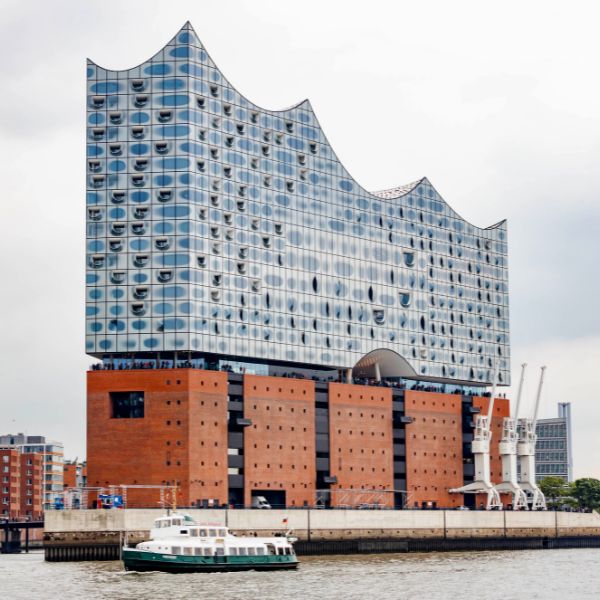
Down the Dungeon
TOP TIP
English tours are held on weekends.
Breaking from the traditional museum stroll, the historical perspective from the Hamburg Dungeon is sure to raise your heart rate a few beats. This isn’t your usual delve into a city’s history, where a tongue-in-cheek account of Hamburg’s slightly more grim side comes to life.
Situated back in the Speicherstadt warehouse district, the Hamburg Dungeon is a 90-minute guided tour through medieval trials and punishments, pirates, the Flood of 1717, and the Great Fire of 1842.
Actors with a slightly sarcastic flair depict life as it was without the fear of actual and imminent death around the corner. Though, it might be best to keep reminding oneself of that as ‘shock and awe’ is equally, and literally, around every corner.
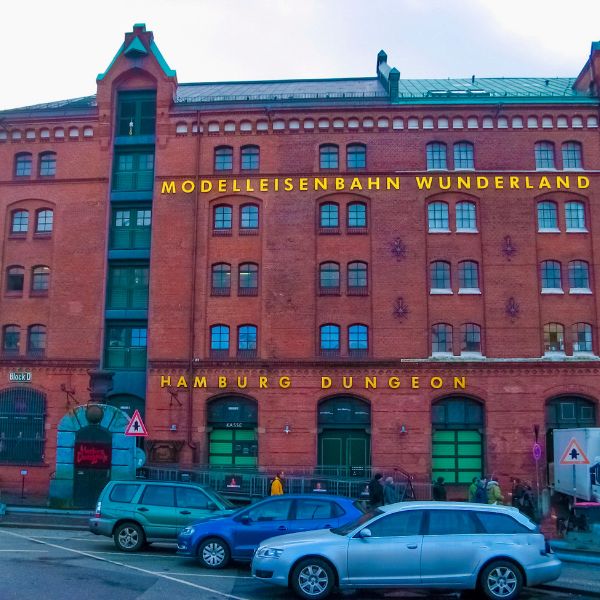
What a Bloomin’ Day
Among all the hustle of tourist attractions in the heart of Hamburg lies a green oasis where Danish cannonballs flew only a few centuries ago. The Planten un Blomen (Plants and Flowers) is a park near the St. Pauli district where one can escape the hustle of everyday life.
Those still looking for something to take in can visit the greenhouses of the Botanical Garden of the University of Hamburg. Separated into subtropical, tropical, fern, and cactus houses, plants are housed under more than 9,000 square feet (2,800 sqm) of glass. For the kids, there are a variety of playgrounds and other attractions like pony rides and a large open-air skating rink.
All that said, the Japanese Garden is perhaps the main attraction. Designed by landscape artist Yoshikuni Araki in 1988, the Japanese Garden is the largest of its kind in Europe.
At its epicenter is a lake with an authentically rustic Japanese tea house where one can participate in classic tea ceremonies while brushing up on Japanese calligraphy. Nearby is the classical-style rose garden, which features over 300 different varieties.
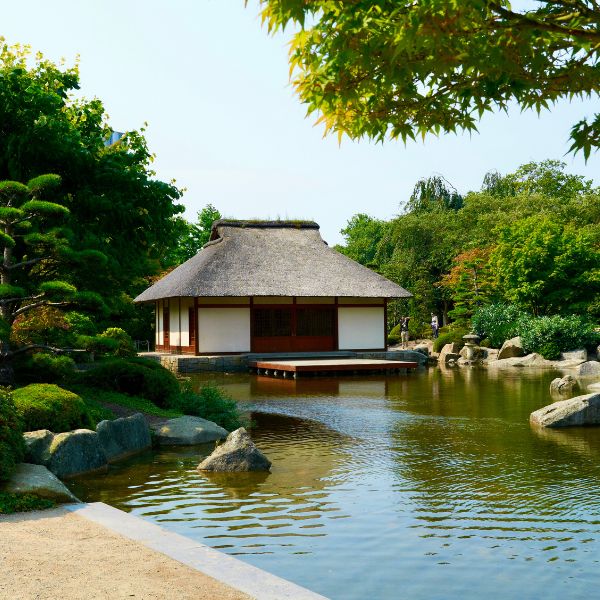
Before the Fab Four
The Beatles are synonymous with wedding playlists, nostalgia, and reinventing pop music as an art form. Many would rightly associate the Fab Four with Liverpool and their infamous photo on London’s Abbey Road.
What few realize, is that without the offering of a regular slot at the nondescript Indra Club located in the red-light district of St. Pauli, the Beatles might have never risen to fame. Unable to get a foot in the door back home in Liverpool, the then-known Silver Beatles jumped at the opportunity in Hamburg.
However, like many opportunities, this one was not paved in gold. Their accommodations were abysmal, which led to John Lennon politely describing them as “a pigsty”. The area around the Indra Club on Große Freiheit 64 wasn’t much better as strip clubs proliferated the district along with resident prostitutes and thieves.
Unperturbed, Paul McCartney was optimistic in the face of it all, describing the experience as “800 hours in the rehearsal room.” It was here they honed their stage presence, tightened the set list, adopted their iconic hairstyle, and released their first album. The culmination of these events eventually garnered attention from music producer Brian Epstein. And the rest is history.
Afore the Mast
TOP TIP
Provided you don’t mind heights, on Saturdays and holidays, you can climb the ship’s masts and rigging up to 114 feet (35 m) above the waterline. Check the website for more info.
Floating museums are nothing new, though there’s still something special about walking the decks of ships having seen decades of service at sea. Between the fully operational U-434 Submarine and the MS Cap San Diego floating museums is the permanently anchored Rickmer Rickmers.
The former three-masted tall ship built in 1896 operated as a freighter and then as a Portuguese Navy training ship until it was decommissioned in 1962. Great efforts were made to bring the ship to Hamburg, where it was finally anchored as a museum and restaurant in 1983. Along with achieving a TripAdvisor Travelers’ Choice in 2020, it has remained an unmissable harbor landmark for four decades and counting.
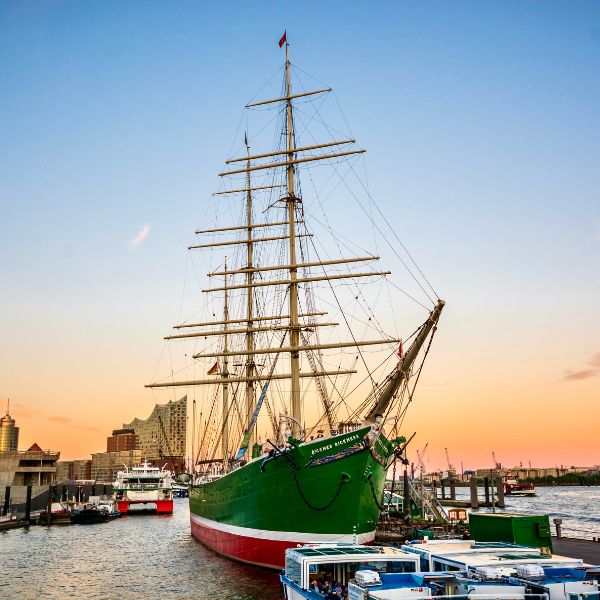
Gallery With No Name
No city is immune from various forms of graffiti. Whether it’s seemingly random and unintelligible words, territorial markings, or countless “____ was here” taggings. However, street art as a form of artistic expression is a different animal. Though, I would suppose many still find it bordering on the offensive, as the option to see or not to see is taken away by its public display.
Whatever your view, Hamburg offers a wealth of street art throughout its districts, with a particular emphasis given to the St. Pauli district. There are an estimated 110 pieces of art dotted around the city and with a list of some of the best here, you won’t have to wander aimlessly despite them being pretty hard to miss.
Water Under the Bridge(s)
Little did medieval Hamburgians know when they dammed the Alster River in 1250, it would define the character of central Hamburg for centuries to come. Done with intentions to create a reservoir that would power the mills operating along its banks, it also created two artificial lakes - Binnenalster (Inner Alster) and the Außenalster (Outer Alster).
interesting fact
The people of Hamburg consume as much drinking water as the basin of Binnenalster Lake.
Of the two lakes, the Outer Alster Lake is the big brother, coming in at the size of 230 soccer pitches. There are plenty of outdoor options, whether on land or the water. A 4.3 mile (7 km) route around the lake is perfect for a morning jog, with sports and play equipment installed along the circuit.
Of course, if you don’t mind getting your feet wet, there are rental shops for sailing boats, canoes, and pedal boats dotted around the lake.
Drifting a little ways down is the famous Elbe River. Undoubtedly the lifeblood of Hamburg, experiencing the city from the water is a great way to spend an hour or two. A harbor cruise is also perhaps the best way to tour the vibrant quayside and Speicherstadt, especially after sunset, where a sea of lights dances across the water. Be sure to have a camera at the ready.
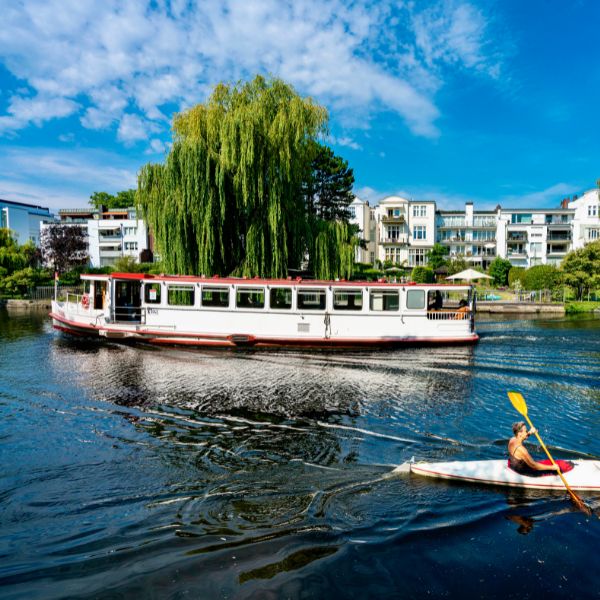
Known for its bridges, of which Hamburg has many, the Alter Elbtunnel (Old Elbe Tunnel) is an alternative way across the Elbe River if you’re looking for a break from the water. It was constructed over 100 years ago for easier transportation access and has been honored as a “Historic Landmark of Civil Engineering in Germany” since 2003.
Entry is free, and it makes for a unique way to cross the river where exhibits and events are also held. Dropping to a depth of 78.7 feet (24 m) below the Elbe and stretching out nearly 1,400 feet (426.5 m) it takes roughly an hour before resurfacing.
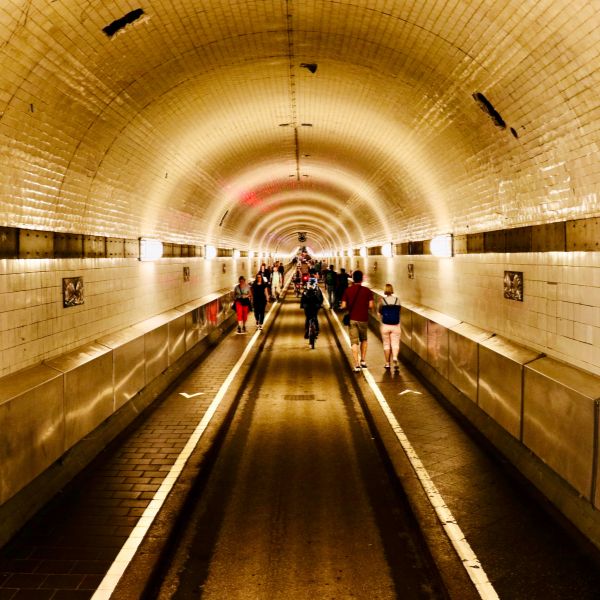
Three’s Company
The Hamburger Kunsthalle (Hamburg Art Gallery) is found in the Altstadt (Old Town) district and is one of Germany’s largest art museums. The museum is spread across three connected buildings and opened its doors in 1850 when it was known as an ‘art hall’.
One of the few Museums in Germany to possess seven centuries of European art, there are more than 130,000 drawings and prints from the Middle Ages to the present. A must for the art-lover or those keen on broadening their cultural horizons.
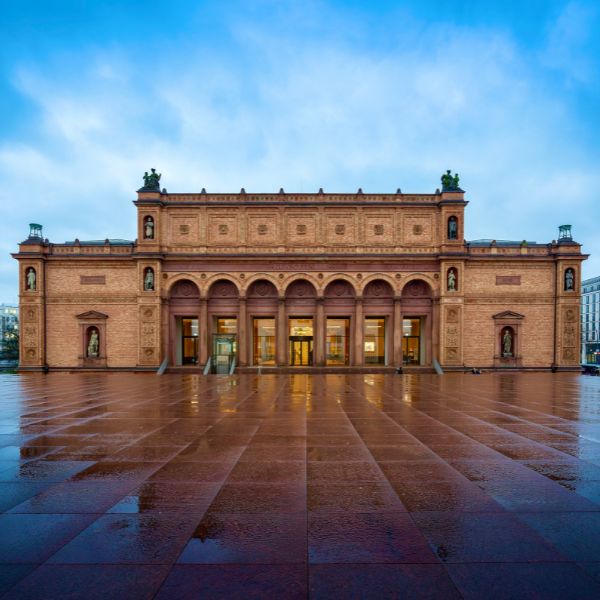
Six Times the Charm
“Repetition is the mother of learning, the father of action, which makes it the architect of accomplishment.” - Zig Ziglar
Presenting, in its sixth iteration, Hamburg City Hall. After the original city hall burned down in 1842 the council made a ‘temporary’ move lasting fifty-five years while awaiting a new permanent facility. The next chapter was constructed over 11 years on 4,000 oak wooden piles driven into the muddy shores of Rathausmarkt (Town Hall Market) and finally reopened in 1897.
In what appears to be a bit of a break from the traditional Hanseatic architecture of the city, Hamburg City Hall gives a bow with an imposing ornate style. The rather subdued debating chamber is easily overshadowed by a Sardinian marble staircase and numerous portraits of celebrated Hamburg citizens.
Guided tours are available and highly encouraged, as this is seemingly equal parts city hall and an art gallery.
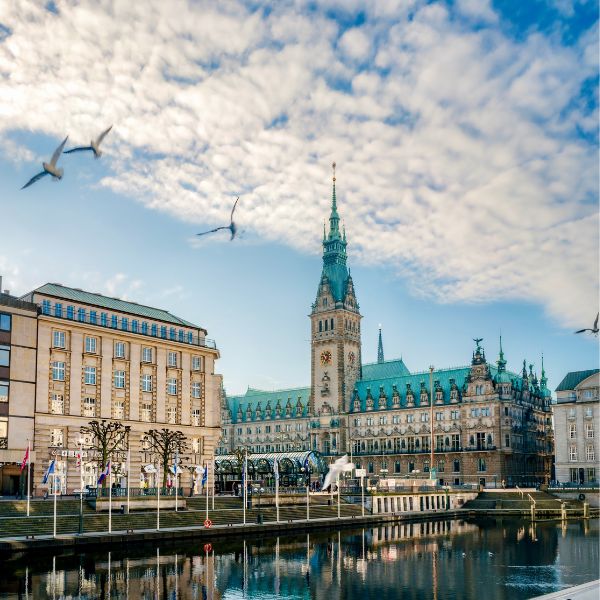
Rest In Peace
On the surface, a visit to the Ohlsdorf Cemetery may not seem like one to make on your travel itinerary if not as a place for personal reflection and serenity. One of the world’s largest cemeteries, and regarded among the finest, Ohlsdorf Cemetery covers nearly 1,000 acres.
Across the cemetery are three museums and twelve chapels interspersed with impressive woodland, ponds, angelic sculptures, and ornate mausoleums. Far from a domestic final resting place, Ohlsdorf is also home to soldiers from more than twenty nations.
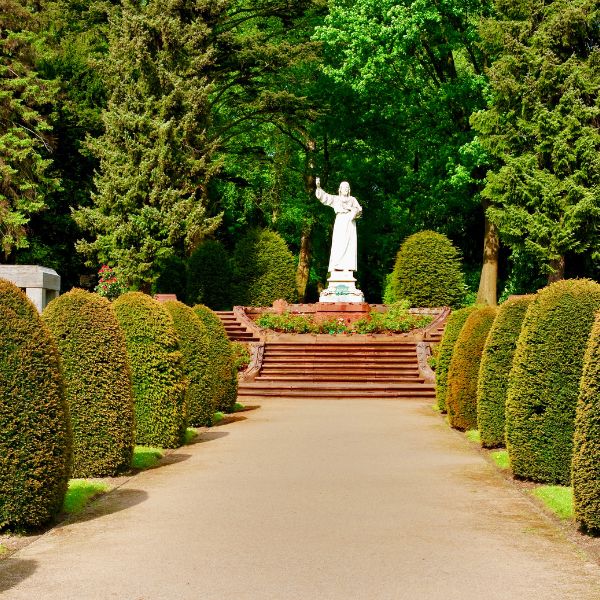
Fish Out of Water
TOP TIP
Be sure to give the fish and crab rolls a try.
Germany’s most popular tourist attractions are no match for a truly immersive experience, and the Hamburg Fish Market delivers on total immersion. Slightly misleading, there’s more than fish being lobbied, along with clothing, fruit, flowers, and souvenirs.
If you can handle the crescendo of fishmongers outdoing each other with their pitches, you’re sure to find something to take with you. The market has been a Sunday mainstay since 1703 while these days there’s a literal party in the Fischauktionshalle (Fish Auction Hall) on Saturdays - dancing encouraged.
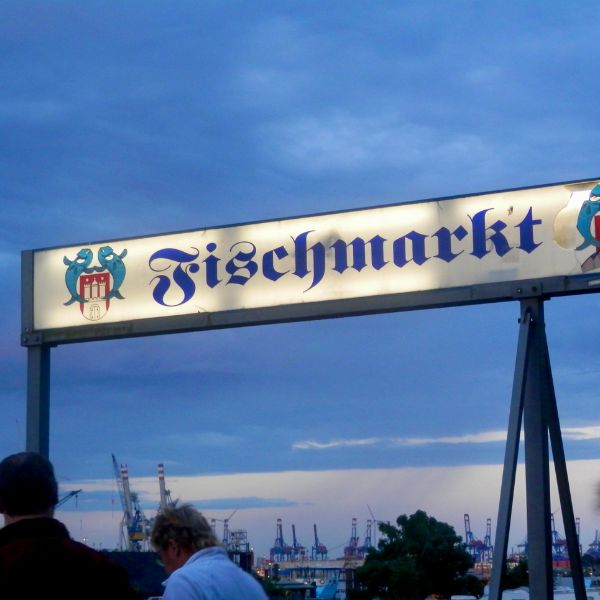
Festive A’Plenty
It would be remiss of me not to give the Hamburg Christmas Market(s) a shoutout before signing off. Albeit brief, the entirety of a festive Hamburg is rather extensive and worth a separate post in itself. Some markets come and go, but there are roughly thirty to choose from in any given year. Highlighting some of the best markets where glühwein and roasted almonds flow as freely as the Elbe…
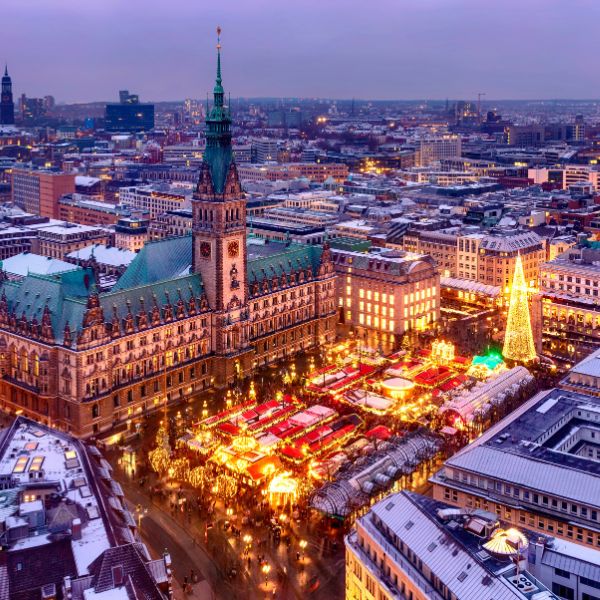
City Hall Market - Subjectively the most famous Christmas market in the city. It’s hard to miss the grandeur of the City Hall Market in Rathausmarkt, along with a reputation that precedes itself.
Wood-carved figurines decorating the stalls alongside traditional gingerbread offerings are only a small sample of handcrafted wares available. Make sure you have a bit of space in your luggage when the kids find Toy Alley before you do.
Jungfernstieg Market - In a break from traditionally-themed stalls, this one may be as close to a white Christmas as many will have. Everywhere is white, even if the snow hasn’t started to fall yet. Stunning light shows are held nightly and best viewed from above on the historic Ferris wheel.
Ottensen Market - Known as cozy but lively, this market caters to colorful diversity with something to appeal to the whole family. Also, foodies take note, you’ll find plenty of Christmas delicacies here with international palette enticing offerings.
And Finally…
…it’s fantastic. Hamburg offers everything you could want in a city indulgently laced with a maritime air. There’s a noticeable desire in retaining the traditional as it permeates the winding narrow lanes to the open squares. With plenty of things to do in Hamburg, it’s difficult living in the moment as one can’t go far without pulling out the camera to capture yet another unmissable sight.
When was Hamburg established?
When was Hamburg established?
825 A.D.
What is the land area of Hamburg?
What is the land area of Hamburg?
291.5 sq mi
What is the population of Hamburg?
What is the population of Hamburg?
1.78 million
What is the GPS location of Hamburg?
What is the GPS location of Hamburg?
53° 33' 3.9096'' N 9° 59' 37.2552'' E
What are the closest major cities to Hamburg?
What are the closest major cities to Hamburg?
Lubeck 36 mi
Bremen 54.6 mi
Hanover 82 mi
Munster 146 mi
Berlin 156.6 mi



